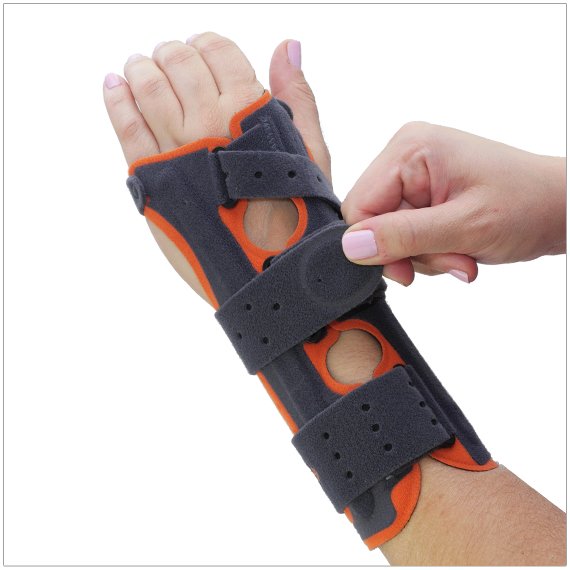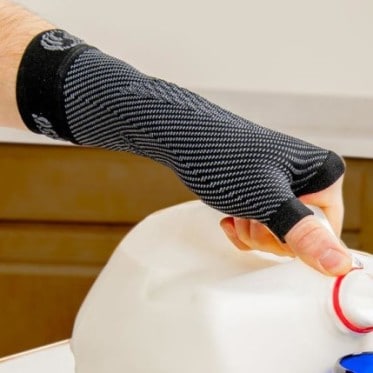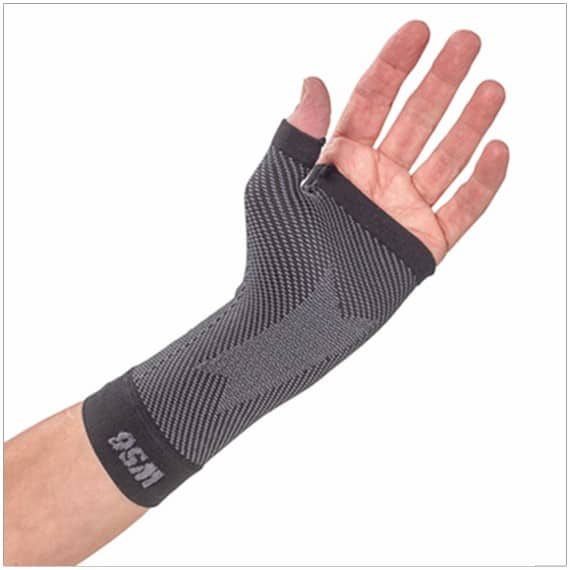Dealing With Carpal Tunnel Pain at Work
If you have Carpal Tunnel Syndrome you understand first-hand the discomfort and pain it can bring to your work day. That wrist pain and annoying numbness and tingling sensation that can be felt in your thumb, index and middle fingers; that weakness in your hands that makes it difficult to grab your cup of coffee or uncomfortable to type on your keyboard, especially in the mornings. Unfortunately, many of us have jobs that involve daily repetitive motions such as using a computer, driving, sanding or assembly line work which can make the discomfort of Carpal Tunnel Syndrome worse. So what can you do to help relieve carpal tunnel pain at work?
Fortunately, there are things you can do to help ease the pain of Carpal Tunnel Syndrome or keep the symptoms from getting worse, even if your job requires repetitive tasks.
Carpal Tunnel Pain Relief On the Job
Here are some ways to help relieve your Carpal Tunnel Syndrome pain on the job.
5 Tips to Relieve your Carpal Tunnel Pain at Work
- Create a more ergonomic workspace by purchasing an ergonomic keyboard and mouse. The padding on the keyboard allows you to keep your fingers, palms, and wrists in a neutral position. The mouse allows you to keep your wrist unkinked and thumb pointed up. Whether you are sitting or standing at the computer, make sure it is positioned directly in front of you. Your forearms should be level with your keyboard.
- Keep Moving – Take frequent breaks; get up to stretch and move your finger and roll your wrists; massage your hands, fingers, and wrists.
- Alternate tasks if you can – That way, you aren’t keeping your hands in the same position all of the time. If you have a repetitive job, ask if you can switch with someone who is doing a different task so that you are using your hands differently. Repetitive tasks can lead to inflammation and swelling that put pressure on the median nerve that runs through the carpal tunnel. (The nerve that runs down your forearm and into the palm of your hand.)
- Sit up straight with your low back supported – Use the arm rests on your chair if you have them. Keep your wrists in a neutral position whenever possible.
- Wear a splint or brace while on the job and driving – The splints will keep your wrists straight to reduce pressure on the nerve and remind you not to bend your wrists. The Fix Comfort Wrist Brace or the WS6 Compression Sleeve are just a few examples of wrist braces that can help relieve the pain and swelling associated with Carpal Tunnel Syndrome

WS6 Wrist Compression Sleeve
In addition to these suggestions, taking nonsteroidal anti-inflammatory drugs (NSAIDs), such as aspirin or ibuprofen and icing your wrist can also help to reduce the swelling and alleviate your pain. If your symptoms persist, despite following the suggestions above, it’s important to consult with your healthcare provider for additional treatment options.
Like what you’ve read? Click here to subscribe to the blog!
Looking for More Information on Wrist Braces for Carpal Tunnel Syndrome?
Click on the image below

Watch Our Video
How To Wear the Orthosleeve WS6 Compression Wrist Sleeve for Carpal Tunnel
Our blogs are educational in nature and are not intended as a substitute for medical advice. Because your condition is unique to you, it is recommended that you consult with your health care provider before attempting any medical or therapeutic treatments. We are always happy to answer questions about products mentioned in our blogs, however, we cannot provide a diagnosis or medical advice



Dealing with carpal tunnel pain at work can be challenging, but there are several steps you can take to help alleviate your symptoms and prevent further discomfort. The first step is to make sure that your workspace is ergonomically designed to reduce stress on your hands and wrists. This may involve adjusting the height of your desk or chair, using a wrist rest, and positioning your keyboard and mouse in a way that feels comfortable and natural. It’s also important to take frequent breaks from repetitive tasks and to stretch your hands and wrists regularly throughout the day.
this Carpal Tunnel is more common to those people working in the offices with computers and not everyone is aware of it and knows what kind of pain they are experiencing. those tips are very helpful and thank you for sharing.
A very well-developed post with step by step guidance on Carpal Tunnel Symptoms.
The way you explained each point with necessary details and maintained good balance between theory and practice is really commendable. Many people love to know about the symptoms from here. I think we can also save our time by following your tips. I highly appreciate your hard work for creating this post that is very useful to those more particularly who are facing problems. Have a super fabulous day.